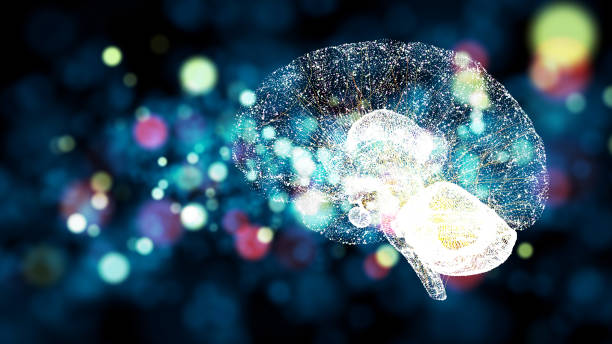
Digimagaz.com – Neural networks have emerged as a transformative force in the field of machine learning. These complex systems of interconnected nodes, inspired by the human brain’s neural structure, have the ability to learn and make predictions from data. In this article, we’ll dive into the intricacies of neural networks, exploring their architecture, training process, and applications in various domains.
Machine learning has ushered in a new era of intelligent systems, and at the forefront of this revolution are neural networks. These computational models mimic the human brain’s neural connections, allowing them to process complex patterns and make informed decisions. In this article, we’ll delve into the world of neural networks, unraveling their components, training methodologies, and real-world applications.
Understanding Neural Networks
The Basics of Neurons
At the heart of neural networks are artificial neurons, also known as perceptrons. These digital counterparts to biological neurons receive inputs, perform mathematical operations on them, and produce an output. Just as synapses transmit signals between biological neurons, weights connect artificial neurons, influencing the strength of the signal.
Layers in Neural Networks
Neural networks consist of layers, each containing multiple neurons. The input layer receives data, which is then processed through hidden layers using weighted connections. The final output is produced by the output layer. The depth and arrangement of these layers contribute to the network’s ability to learn intricate patterns.
Activation Functions
Activation functions introduce non-linearity to neural networks, enabling them to model complex relationships in data. Functions like ReLU (Rectified Linear Activation) and Sigmoid transform the weighted sum of inputs into an output, adding the network’s capacity to capture diverse patterns.
Types of Neural Networks
Feedforward Neural Networks (FNN)
FNNs are the simplest form of neural networks, where data flows in one direction—through input, hidden, and output layers. They excel in tasks like image recognition and classification, where the input data doesn’t have a temporal relationship.
Convolutional Neural Networks (CNN)
CNNs are designed to process grid-like data such as images. They use convolutional layers to automatically detect features and patterns, making them highly effective for tasks like image segmentation and object detection.
Recurrent Neural Networks (RNN)
RNNs are tailored for sequential data, where the order of inputs matters. Their hidden neurons maintain a memory of previous inputs, making them suitable for tasks like natural language processing and speech recognition.
Training Neural Networks
Backpropagation
Backpropagation is the cornerstone of training neural networks. It involves adjusting the weights and biases of the network based on the difference between predicted and actual outputs. This iterative process fine-tunes the network’s parameters for optimal performance.
Loss Functions
Loss functions quantify the disparity between predicted and actual outputs. They guide the optimization process by providing a numerical measure of the network’s performance. Common loss functions include Mean Squared Error (MSE) and Cross-Entropy.
Optimizing Weights and Biases
Optimization algorithms, such as Gradient Descent, update the weights and biases of the neural network to minimize the loss function. This process aims to find the optimal set of parameters that enable accurate predictions.
Deep Learning and Neural Networks
Going Deeper with Deep Neural Networks
Deep Neural Networks (DNNs) extend the concept of neural networks by introducing more hidden layers. This depth allows DNNs to learn hierarchical abstractions, enabling them to tackle even more complex tasks.
Feature Learning and Hierarchical Abstractions
DNNs excel at learning features at various levels of abstraction. Lower layers capture simple features like edges, while higher layers combine these features to recognize more complex patterns, enabling the network to understand intricate relationships in data.
Applications of Neural Networks
Image Recognition and Classification
Neural networks have revolutionized image recognition, enabling computers to identify objects, people, and scenes in images with remarkable accuracy. They power applications like facial recognition and medical image analysis.
Natural Language Processing
In natural language processing, neural networks have made significant strides in tasks like sentiment analysis, language translation, and text generation. Recurrent Neural Networks (RNNs) and Transformer models have played a pivotal role in these advancements.
Autonomous Vehicles
Neural networks play a crucial role in the development of autonomous vehicles. They process data from sensors, identify objects and obstacles, and make real-time decisions, contributing to the safe navigation of self-driving cars.
Challenges and Future Directions
Overfitting and Regularization
Overfitting occurs when a neural network performs well on training data but poorly on new, unseen data. Techniques like dropout and L2 regularization help mitigate overfitting by preventing the network from becoming overly specialized to the training data.
Interpretable AI and Ethical Concerns
As neural networks become more complex, understanding their decision-making processes becomes challenging. Researchers are actively working on creating interpretable AI models to address concerns related to transparency and accountability.
Advancements in Neural Architecture
The field of neural architecture search aims to automate the design of neural networks, tailoring them to specific tasks. This promises to accelerate the development of efficient and effective network structures.
Conclusion
In the ever-evolving landscape of machine learning, neural networks stand as a testament to the remarkable strides humanity has made. These versatile models have transformed industries and continue to push the boundaries of what’s possible. As we navigate the intricate pathways of neural networks, we unlock new dimensions of AI capabilities that promise to shape our future.





